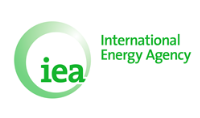
- Estimate increased by 110,000 barrels a day to almost 500,000
- Agency cites improved outlook for Russian production
The International Energy Agency increased its estimate of oil
production from countries outside OPEC next year, citing an improved
outlook for Russia.
Supply growth from nations outside the
Organization of Petroleum Exporting Countries will be “just shy” of
500,000 barrels a day, an increase of 110,000 from the agency’s forecast
last month, it said Thursday. Russian production is likely to grow by
190,000 barrels a day, building on a 230,000-barrel increase in 2016.
Swelling
output from non-OPEC countries including Russia, Brazil and Kazakhstan
presents a challenge for the 14-member exporters’ group, which meets at
the end of November to hammer out the details of a production cut to
buoy prices. While Russia has said it will consider joining an OPEC
agreement, its own output has climbed to a post-Soviet record.

Brazil
is set to increase production by 280,000 barrels a day next year, while
Canadian output will rise by 225,000 barrels and Kazakh supply by
160,000, the Paris-based IEA forecast in its monthly report. Non-OPEC
supply will total 57.2 million barrels a day.
“This means that 2017 could be another year of relentless global supply growth similar to that seen in 2016,” IEA said.
While
non-OPEC production is likely to drop by 900,000 barrels a day this
year, it rose by almost 500,000 a day last month as new fields started,
according to the agency. Maintenance and unscheduled shutdowns,
especially in the North Sea, had curbed production in September.
Kazakhstan’s giant Kashagan
field boosted output in October after coming online the previous month,
and oil-loading schedules suggest North Sea production also rebounded.
OPEC Policy
OPEC,
led by Saudi Arabia, decided in November 2014 against curtailing
production to support oil prices and instead pump at capacity to
increase market share. This drove crude to a 12-year low in January this
year and pushed high-cost U.S. production down. Following more than two
years of low prices, OPEC reversed its policy in September, saying it
would cut production for the first time in eight years.
The
consequent rally in prices brought back some U.S. drilling. In October,
14 out of a total 25 oil rigs returning to service were added in the
Permian shale basin, where production rates are beating expectations,
the IEA said. Output in the Bakken and Eagle Ford shales isn’t as
strong, and the IEA sees U.S. crude supply declining “modestly” in 2017.
Total
U.S. oil and natural-gas liquids production will shrink by 465,000
barrels a day this year to 12.5 million barrels, and stay around this
level in 2017, the agency forecasts.
No comments:
Post a Comment